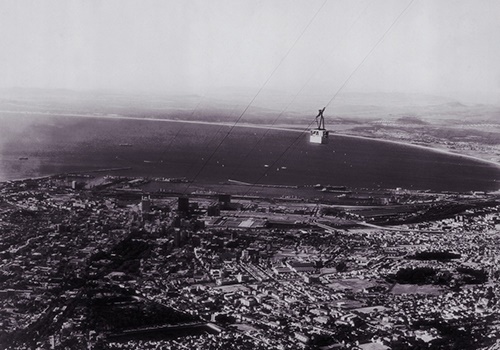
Parent24 is answering kids curious questions in a new 'Did you know?' series, and in this installment, we're answering the question:
Do you know why Table Mountain is flat?
Whether visitor or local, it's hard not to miss the massive mountain taking up so much of the background of the Mother City.
Located in the Table Mountain National Park, in Western Cape, South Africa, and one part of an 850 km long mountain range called the Cape Fold Belt, Table Mountain is of one Cape Town's most famous natural attractions.
And no matter how many times you've seen it, it's hard not to be amazed at just how flat it is.
If you're visiting, you might have heard some of the fables and myths about its origin, one of them is that the mountain was once a group of four giants created by the goddess Jobela to protect the earth.
Table Mountain is often covered in a thick layer of clouds, which locals have named the 'table cloth'.
According to another myth, the table cloth isn't made of clouds at all but rather smoke from a smoking contest between the devil and a folk tale character, a Dutch sailor named Jan van Hunks.
- Did you know? SA is home to two of the thirteen otter species around the world
- Did you know there is a fish migration so huge it can be seen from space?
- Did you know the Eastern Cape is home to Africa's highest bridge bungee jump?
But what's the real reason for that table-like peak?
Today, the mountain stands at 1 085 metres (257 metres taller than the tallest building in the world!) but can you believe that 600-million years ago it began as a flat surface?
Like our planet, the mountain consists of layers, and it was during this flat phase that an ice sheet called the Pakhuis Formation was formed. Apart from a remaining chunk near Maclear's Beacon (the mountain's highest point), this layer no longer exists today. *Remember this layer because we talk more about it below
Underneath this Pakhuis Formation layer, lies the Peninsula Formation layer, consisting of a tough rock called quartzitic sandstone also known as Table Mountain Sandstone or Peninsula Formation Sandstone. Today, this Peninsula Formation layer forms the top layer of the mountain.
The bottom (and oldest) layer of Table Mountain is called the Graafwater Formation, which consists of mudstones.
From valley to mountain
All these layers formed slowly over time, and through natural processes pushed up to eventually form the 1 085 m natural structure we see today.
And if you're still scratching your head about that flat top, scientists say this came to be because each of the mountain's layers are made of different types of hard and soft rocks.
As time passes, nature's elements like water, fire and wind impact the layers in different ways.
Remember that ice sheet layer we mentioned earlier, the Pakhuis Formation? Researchers compare this layer to the "cream-topping on a cake" and over time most of it was worn away by the elements leaving the much tougher Peninsula Formation layer exposed as a flat surface.
In short, time and the elements have eaten away at what was once a massive stack of pancakes made from various types of rock.
How cool is that?
Here's a look:
Railway vs Cableway
Today Table Mountain is a Unesco World Heritage Site and one of the New7Wonders of Nature. One of it's most famous features is its cableway which cuts a two-hour hike down to a 5-minute ride.
Plans to build the cableway began in 1926, and it was completed by 1929.
But according to the Managing Director at Table Mountain Aerial Cableway Company, Wahida Parker the cableway had almost been a railway.
Talks of a railway had started way back in the 1870s she says but the plans were put on hold due to the First World War.
But regardless of whether you take the cableway up or brave the two hours on foot, Wahida says the mountain belongs to everyone and should act as a reminder for all of us to celebrate our heritage.
Do you have a curious question about South Africa? Send it to us, and we'll find the answer!
Email us, to send a question.
Find more children's resources here.
Don't miss a story!
For a weekly wrap of our latest parenting news and advice sign up to our free Friday Parent24 newsletter.




 Publications
Publications
 Partners
Partners














